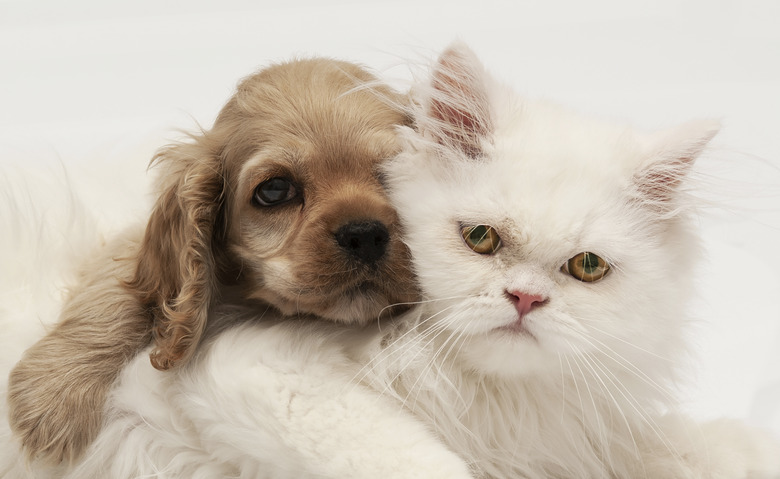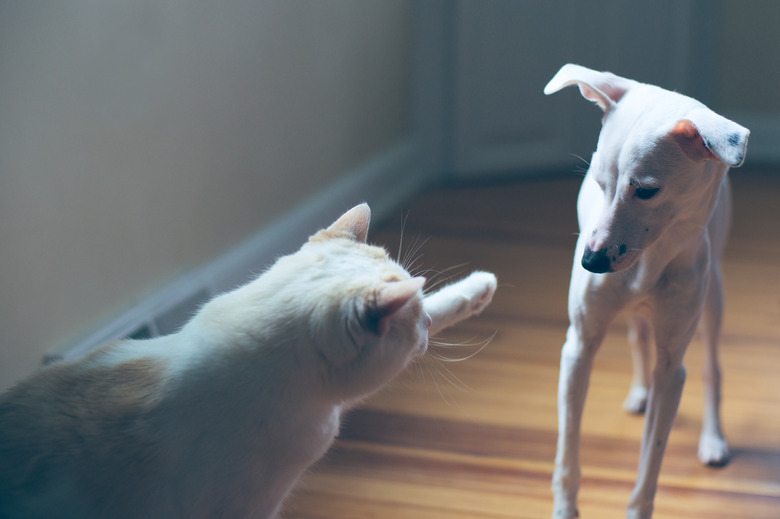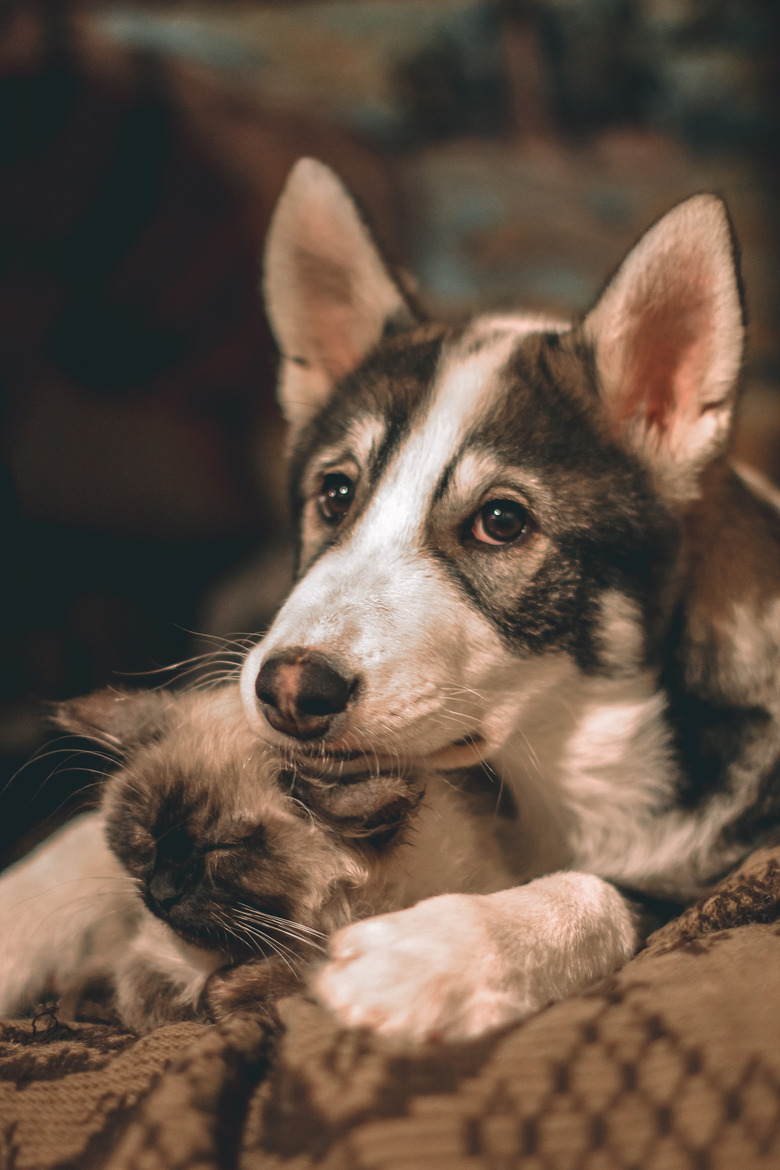Why Does My Dog Hump My Cat?
There is no two ways about it: dogs do some pretty strange stuff. Whether it's the weird things dog owners come home to, the gross stuff we humans just don't relate to like rolling in poop, or eating poop, or any other poop-related thing, dogs really show themselves to be characters, that's for sure.
Let's take dog humping, for example. When it's not your dog, or your leg being humped, this is an activity that can be amusing for us humans. It is also very natural for dogs. But just as much as you would prefer your dog to hump something other than your leg, your cat is probably not loving the...loving, either. So why is your dog humping your cat? In order to answer this, we have to look into the reasons dogs hump in general.
Mounting activities are natural for dogs
Mounting activities are natural for dogs
While we often consider our fur babies to be members of our family, they have some behavior tendencies that would not fly if they were humans. Dogs mount and hump various objects such as legs, balls, stuffed animals, other dogs, household furnishings, and their cat roommates. They do this as a sign of excitement or stress, as a way to play, to prepare for intercourse, because they are anxious or bored. Basically, dogs hump for a lot of different reasons. Ultimately, with some basic behavior adjustment and training, it is possible to nip this behavior tendency in the bud.
Humping or mounting behaviors tend to manifest when a dog is young, usually within the first year of his or her life. You read that right–both males and females will engage in humping or mounting and it is considered perfectly natural. However, if the target object of this attention is not happy, it can be dangerous for your dog. Other dogs, cats, or people may lash out and cause injury to your dog in an attempt to get him to stop. For this reason, it is important to redirect this behavior early on in your dog's training.
Why the cat, though?
Why the cat, though?
Since this mounting behavior is normal for your dog, you don't have to be worried or frightened if you see him getting up close and very personal with the cat. In order to understand why he's choosing to engage in this way with the cat, begin by paying attention to what is going on when this behavior occurs. Does your dog seem anxious? Is he playing? Are there other dogs around? What is your cat doing when this is happening? Does he seem stressed or is he ignoring it? As you pay attention to the circumstances, you may be able to see a pattern emerge. Is it just the cat, or is your dog also humping anything that moves and most things that don't?
While dog behaviorists don't really agree on what purpose humping serves when it is not with the intention of mating, it is possible that it is a way to show dominance. It is equally possible it is a way to let out some extra energy and over-excitement and has nothing to do with dominance displays at all. Alternatively, it can be a compulsive behavior.
How to redirect the behavior
How to redirect the behavior
So, if you're watching your dog hump your cat, and you notice that the cat doesn't seem phased, you have a choice: are you going to let your pooch dog the cat or are you going to redirect him to a more appropriate target for his attention or stop the behavior altogether?
If your cat is hissing, growling or scratching and making it abundantly clear that the dog's advances are unwelcome, it is important to limit this behavior. Since most occurrences of humping or mounting are a result of over-excitement, over-stimulation, or boredom, provide your dog with an alternative activity. Make sure he gets enough mental and physical stimulation during the day. Make a doggy playground in your backyard or living room. Go for a nice long walk along a route you haven't been before. Whether you are command or clicker training your dog, when he is directed to stop the humping behavior he needs to listen right away. Reward him when he does with a treat or physically remove him from the situation if he doesn't stop on his own.


